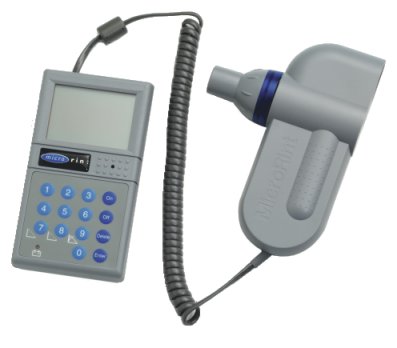
|
This unique design has taken a hitherto specialized measurement out of
the pulmonary function laboratory and into the clinic or home. It enables
airway resistance to be measured with the same ease as peak flow but without
requiring co-operation by the patient. The patient simply breathes through
a mouthpiece or face mask. A rapidly occluding valve automatically interrupts
the airway for a period so brief as to be imperceptible to the patient.
Rint is automatically computed and displayed. The whole procedure takes
only a few minutes and can be used for all age ranges from neonates to
adults. With a transducer weighing only 12 oz., the instrument is palm
sized and comes complete with carrying case. The MicroRint now also comes
with its own software. This will enable live blows to be displayed and
stored on screen and is a useful addition to the MicroRint package.
|


